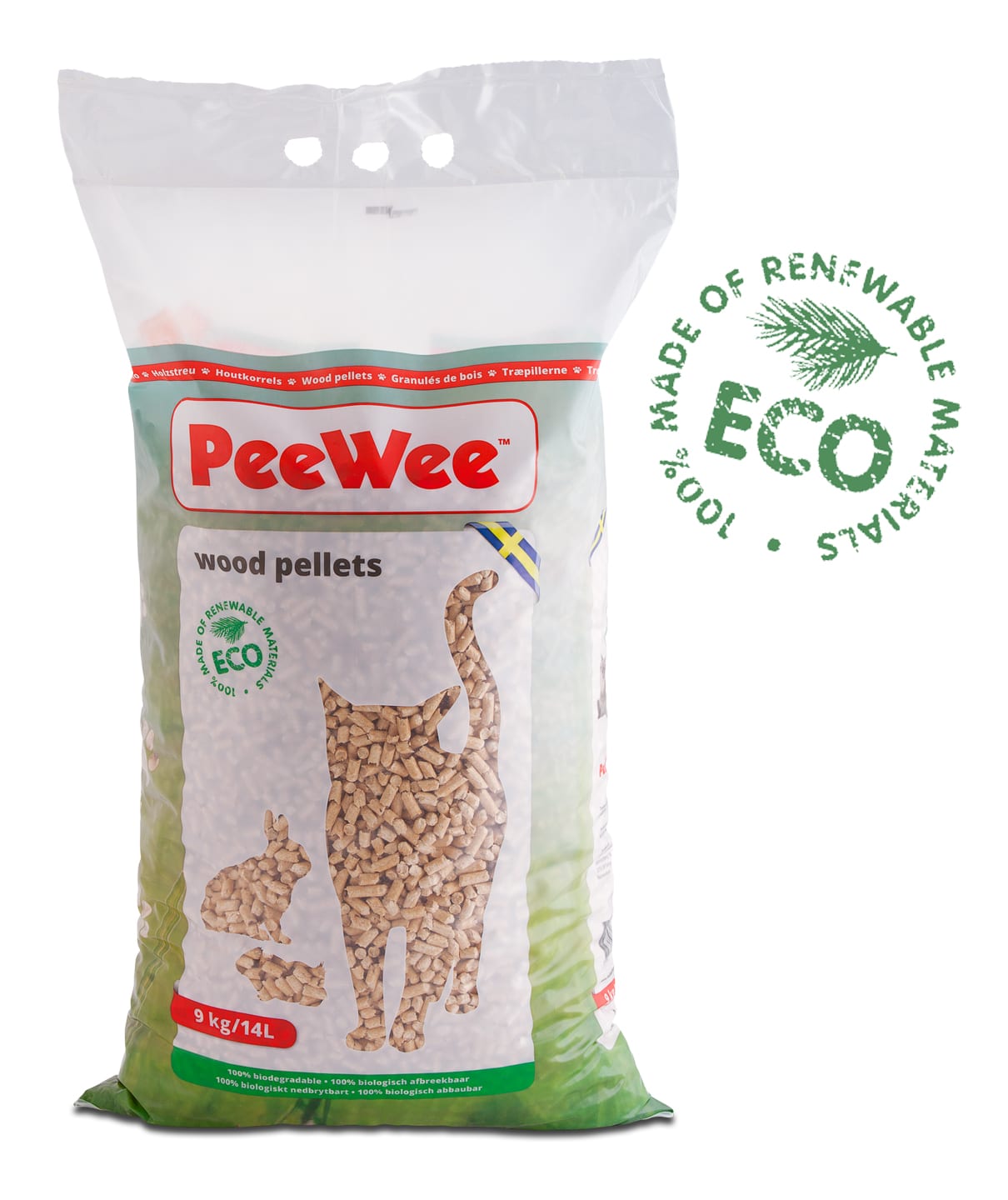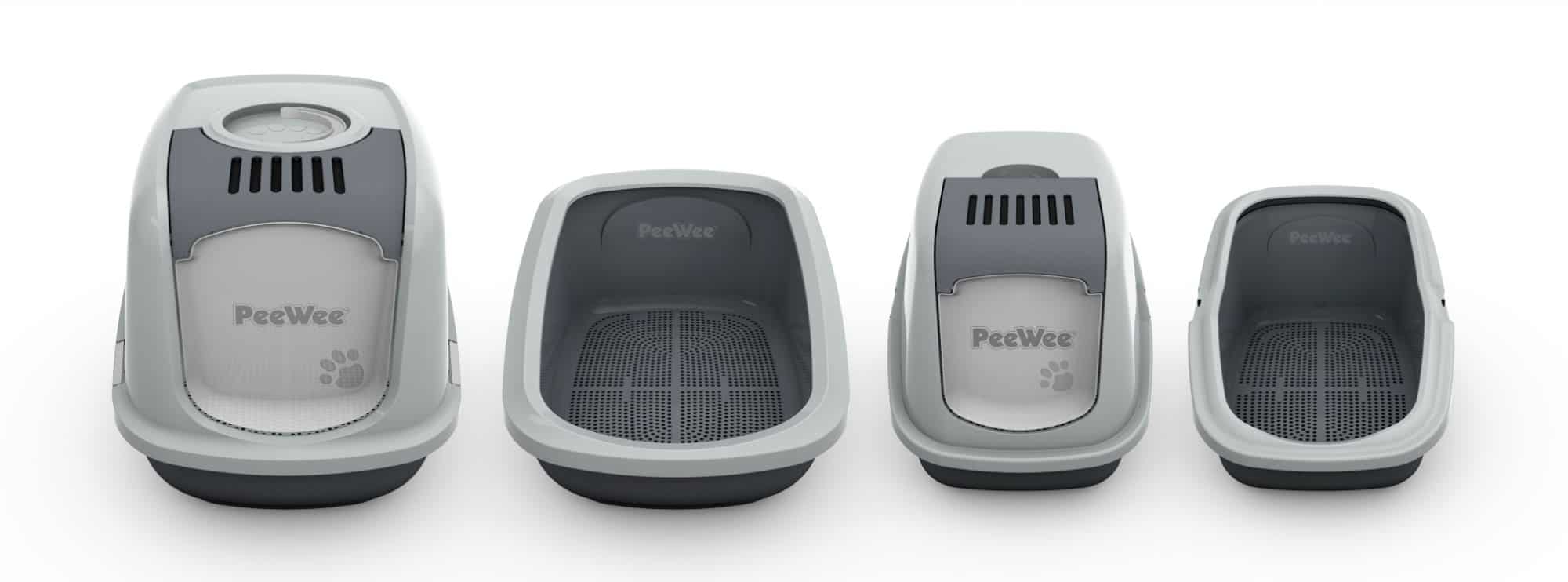What makes PeeWee wood pellets so special?
extremely absorbent

PeeWee wood pellets are made of pure sawdust from Swedish-grown Norwegian spruce and Scots pine with no bark or leaf. The sawdust is a by-product of FSC-approved forestry in northern Sweden, where trees grow more slowly due to the cold, creating a special wood structure − the structure to which the PeeWee pellets owe their specific properties.
The sawdust is compressed into pellets in a unique process without the use of glue or any chemical additives. That makes PeeWee pellets 100% natural and 100% sustainable. In addition, the pellets are impervious to mould and frost.
PeeWee wood pellets have the unique characteristic of neutralising the smell of ammonia and absorbing considerably more moisture than any other cat litter on the market − up to 15 times their own volume!

Questions and answers
Used in an EcoHûs or EcoMinor litter box by one cat, a 9 kg bag of PeeWee pellets will last as long as 4 months.
The wood pellets are available in small 3 kg (5 litre) bags and large 9 kg (14 litre) bags.
The system only works optimally with PeeWee pellets. Other wood pellets may look similar but have often proven not to have the same composition and absorbent properties as the PeeWee pellets. We also recommend not mixing PeeWee pellets with other wood pellets.
Despite the fact that PeeWee pellets are 100% natural products, they are not officially allowed in organic waste bins because they do not carry a quality mark. So formally, we must advise that both the pellets and sawdust should always be disposed of as residual waste.
Please refer to the waste separation guide for more information
We advise you not to flush the sawdust or wood pellets down the toilet. This can cause serious blockages. The soiled sawdust is best disposed of in the refuse bin. Flushing the faeces down the toilet is not a problem but do try to make sure that as few wood pellets as possible end up in the toilet, and flush well.
The layer of pellets in the top tray should certainly not exceed the 2 cm mark. If the tray is too full, more pellets will be soiled. As well as being expensive, the pellets in the top tray will not stay clean. The litter box system will not work optimally.

